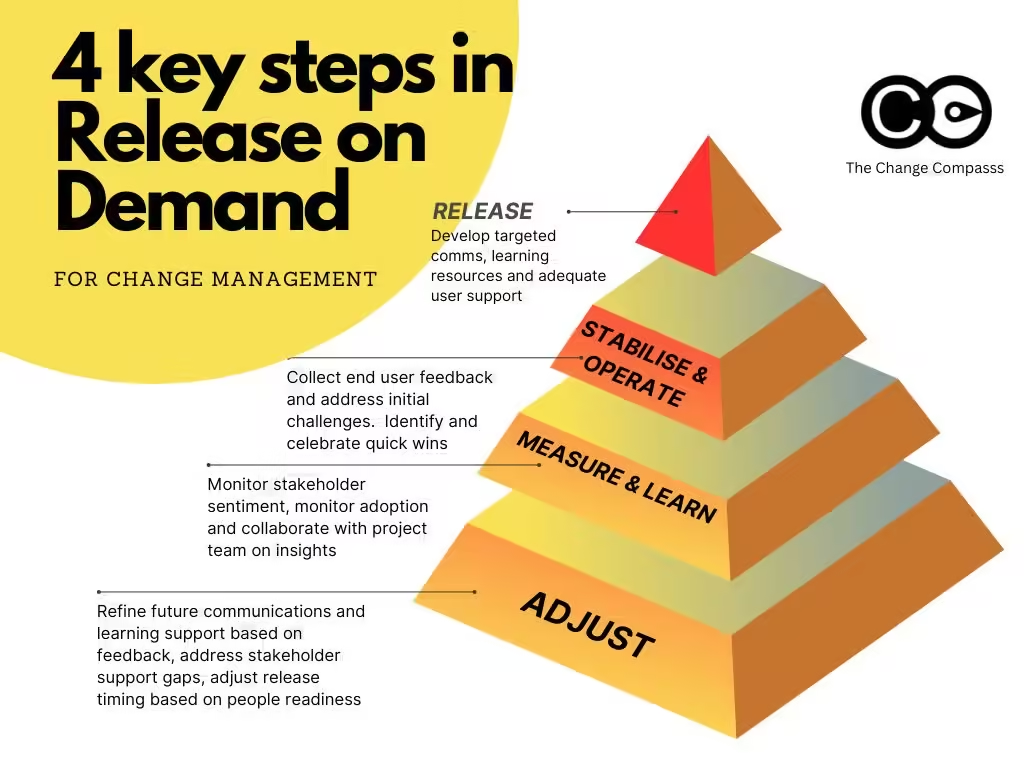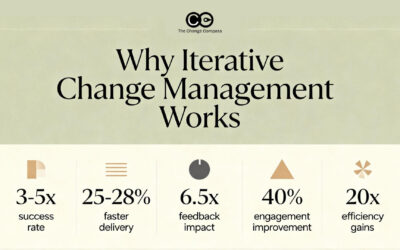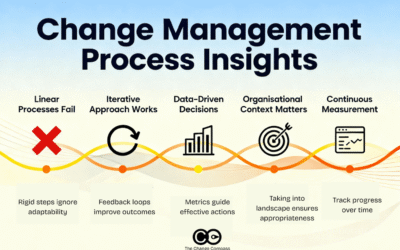In the world of scaled agile, “Release on Demand” is a concept that has profound implications for agile teams and their project approaches. It guides teams on how to release and deliver value when stakeholders and customers are truly ready to receive it. However, a crucial, often-overlooked factor in this concept is the role of change management. While Release on Demand has primarily been framed as a technical approach within the Scaled Agile Framework (SAFe), the readiness of people—including end-users, stakeholders, customers, and partners—forms an equally vital part of determining the demand for release.
As change management practitioners, understanding and actively shaping “Release on Demand” can significantly impact project outcomes. In this article, we’ll explore how change management can enhance this core SAFe concept through strategic timing, prioritisation, and thoughtful execution of each release. We’ll also discuss how to structure governance cadences to ensure operational and people readiness, going beyond the technical lens.
Understanding Release on Demand in SAFe
Within SAFe, Release on Demand means that project outputs or new functionality are delivered when the organisation, teams, and stakeholders are ready to adopt and benefit from it. It enables flexible delivery rather than a rigid release schedule. The four key activities for Release on Demand are:
- Release – Delivering the product or change to users.
- Stabilise and Operate – Ensuring the release is operationally sound and running smoothly.
- Measure and Learn – Assessing the release’s impact and learning from the results.
- Adjust – Making necessary improvements based on insights gained.
The goal of these activities is to minimise risk, gather user feedback, and optimise the release to maximise impact. While these steps seem straightforward, they demand thoughtful change management to ensure all stakeholders are prepared to support, use, and benefit from the release. Let’s delve deeper into how a change management approach can strengthen each of these activities.

People Readiness as the Core Demand Factor
The “demand” for a release is often misunderstood as being purely about project or market readiness. However, the reality is that it depends on multiple factors, including how ready people are to adopt the change. For any release to succeed, people readiness is crucial and requires focus on:
- End-User Readiness: Ensuring that end-users are prepared for the new tools, processes, or functionalities. This could mean conducting user training, crafting support resources, and managing expectations.
- Stakeholder Readiness: Stakeholders at all levels need to understand the change, its rationale, and its anticipated impact. This may involve regular briefings, updates, and even individual consultations.
- Customer and Partner Readiness: For customer-facing or partner-facing releases, it’s essential to gauge external readiness as well. A clear communication plan and alignment of goals with partners or clients can smooth the path for a successful launch.
These readiness efforts form a significant part of the “demand” in Release on Demand and reflect the reality that people’s capacity to adapt often determines when a release will be genuinely effective.
The Broader Change Landscape
People readiness isn’t only determined by a single project or team but by the broader change landscape within an organisation. Multiple changes or ongoing initiatives can either enhance or inhibit readiness for a new release. For instance, if an organisation is already undergoing a significant digital transformation, adding another change may lead to overload and resistance.
Change practitioners should map the change landscape to identify concurrent changes and evaluate how these may impact readiness for Release on Demand. By assessing the timing and impact of other changes, change managers can:
- Avoid change fatigue by spacing out initiatives.
- Synchronize related changes to reduce redundancy.
- Communicate the overall strategic direction to help stakeholders and users understand how individual changes fit into the bigger picture.
By accounting for these interdependencies, change management can improve people readiness and ensure the Release on Demand aligns with the organisation’s capacity to handle it.

Applying the Four Key Steps in Release on Demand
Let’s explore how change management activities can amplify each of the four Release on Demand steps:
1. Release: The release phase requires both technical and people preparation. Beyond deploying the technical elements, change management practitioners should:
- Develop targeted communication plans to inform all affected stakeholders.
- Offer targeted training sessions or resources that build users’ confidence and competence.
- Ensure adequate support is in place for the transition, including help desks or peer mentoring.
2. Stabilise and Operate: After a release, it’s crucial to monitor adoption and support operational stability. The change team can:
- Collect feedback from end-users and support staff on initial challenges and address these promptly.
- Identify and celebrate quick wins that demonstrate the release’s value.
Work closely with operations teams to resolve any unforeseen issues that may inhibit adoption or cause frustration.
3. Measure and Learn: This step goes beyond tracking technical metrics and should also capture change-specific insights. Change management can contribute by:
- Conducting surveys, interviews, or focus groups to gauge user and stakeholder sentiment.
- Monitoring adoption rates and identifying any training gaps or knowledge shortfalls.
- Collaborating with product or project teams to share insights that may refine or prioritisation subsequent releases.
4. Adjust: Based on insights gained from the Measure and Learn phase, change managers can advise on necessary adjustments. These might include:
- Refining future communication and training plans based on user feedback.
- Addressing any gaps in stakeholder support or sponsorship.
- Adjusting the timing of subsequent releases to better align with people readiness.
The iterative nature of these four steps aligns well with agile methodologies, allowing change managers to continuously refine and enhance their approach.
The Critical Role of Sequencing, Prioritisation, and Timing
FFor change management practitioners, Release on Demand isn’t just about executing steps—it’s about doing so in the right sequence and at the right time. The impact of a release depends significantly on when it occurs, who is prepared for it, and how well each group’s readiness aligns with the release cadence and continuous integration.
Here are some tips to help change managers get the timing right:
- Analyze stakeholder engagement levels: Regularly assess how engaged and ready stakeholders are, tailoring messaging and interventions based on their feedback and sentiment.
- Prioritisation change activities based on impact: Not all releases will have the same impact, so change teams should focus resources on those that require the most user readiness efforts.
- Create phased rollouts: If full-scale readiness across the board isn’t achievable, a phased rollout can provide users with time to adapt, while allowing the change team to address any emergent issues in stages.
By managing the release cadence thoughtfully, change managers can avoid the disruptions caused by hasty releases and ensure the deployment feels both manageable and meaningful for users.
Expanding Release Governance Beyond Technical Focus
Release governance in SAFe is often perceived as a predominantly technical or project-focused process. However, effective governance should encompass business operations and people readiness as well. Change management plays a pivotal role in designing governance cadences that account for these critical aspects.
To integrate change governance within release governance, change practitioners should:
- Establish clear communication channels with project teams and product owners to ensure people readiness factors are consistently part of release discussions.
- Implement a readiness checklist that includes technical, operational, and people readiness criteria. This checklist should be reviewed and signed off by relevant stakeholders before any release.
- Maintain a cadence of review and feedback sessions where project teams, change managers, and stakeholders discuss readiness progress, key risks, and post-release outcomes.
This approach ensures that each release is evaluated from multiple perspectives, minimising disruption and maximising its potential for success.

The above is from Scaledagileframework.com
Developing a Change Cadence that Complements Agile Delivery
SAFe’s principle of “develop on cadence; release on demand” is central to effective agile delivery. For change management practitioners, developing a strong change cadence is equally important. This cadence, or rhythm of activities, aligns with the agile teams’ development cadence and helps build stakeholder momentum, maintain engagement, and reduce surprises.
Here’s how to develop a cadence that works in tandem with agile teams:
- Planning Cadence: Hold regular planning sessions to align change activities with upcoming releases and identify readiness gaps. This could be quarterly for major releases or bi-weekly for smaller, iterative releases.
- Execution Cadence: Establish a reliable cycle for change interventions, such as training, communication, and stakeholder meetings. This cadence helps stakeholders build expectations and fosters a predictable rhythm in change activities.
- Feedback Cadence: Collect feedback at consistent intervals, aligning it with release intervals or sprint reviews. Consistent feedback keeps the change process agile and responsive to evolving needs.
A well-defined change cadence not only prepares users effectively but also reinforces trust and transparency in the change process.
Release on Demand may have originated as a technical concept within SAFe, but its success is deeply tied to how well people, stakeholders, and users are prepared for each release. For change management practitioners, Release on Demand is an opportunity to enhance the broader release process by prioritizing people readiness, orchestrating thoughtful sequencing, and establishing governance that prioritisations user success as much as project outcomes.
By proactively engaging in each of the four stages of Release on Demand—Release, Stabilise and Operate, Measure and Learn, and Adjust—change management can ensure releases are not just technically ready but fully integrated into the people and business context they serve. Embracing this role allows change managers to become essential partners in agile delivery, maximising the impact of each release for end-users, the organisation, and the overall success of the project.





